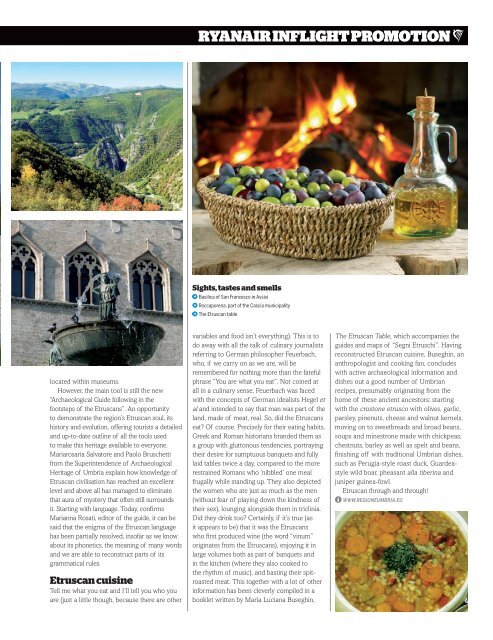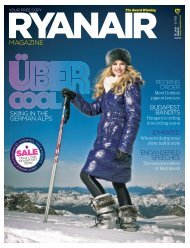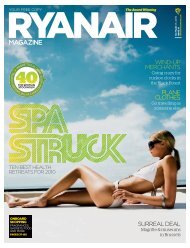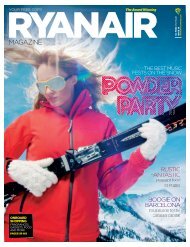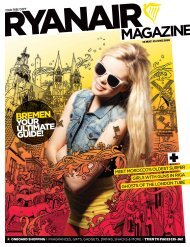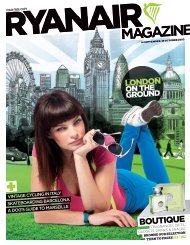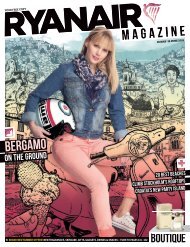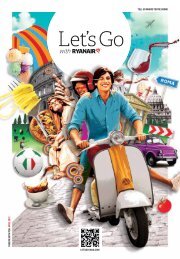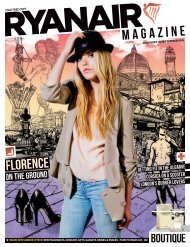october-2009
october-2009
october-2009
You also want an ePaper? Increase the reach of your titles
YUMPU automatically turns print PDFs into web optimized ePapers that Google loves.
located within museums.<br />
However, the main tool is still the new<br />
“Archaeological Guide following in the<br />
footsteps of the Etruscans”. An opportunity<br />
to demonstrate the region’s Etruscan soul, its<br />
history and evolution, offering tourists a detailed<br />
and up-to-date outline of all the tools used<br />
to make this heritage available to everyone.<br />
Mariarosaria Salvatore and Paolo Bruschetti<br />
from the Superintendence of Archaeological<br />
Heritage of Umbria explain how knowledge of<br />
Etruscan civilisation has reached an excellent<br />
level and above all has managed to eliminate<br />
that aura of mystery that often still surrounds<br />
it. Starting with language. Today, confi rms<br />
Marianna Rosati, editor of the guide, it can be<br />
said that the enigma of the Etruscan language<br />
has been partially resolved, insofar as we know<br />
about its phonetics, the meaning of many words<br />
and we are able to reconstruct parts of its<br />
grammatical rules.<br />
Etruscan cuisine<br />
Tell me what you eat and I’ll tell you who you<br />
are (just a little though, because there are other<br />
RYANAIR INFLIGHT PROMOTION<br />
Sights, tastes and smells<br />
Basilica of San Francesco in Assisi<br />
Roccaporena, part of the Cascia municipality<br />
The Etruscan table<br />
variables and food isn’t everything). This is to<br />
do away with all the talk of culinary journalists<br />
referring to German philosopher Feuerbach,<br />
who, if we carry on as we are, will be<br />
remembered for nothing more than the fateful<br />
phrase “You are what you eat”. Not coined at<br />
all in a culinary sense, Feuerbach was faced<br />
with the concepts of German idealists Hegel et<br />
al and intended to say that man was part of the<br />
land, made of meat, real. So, did the Etruscans<br />
eat? Of course. Precisely for their eating habits,<br />
Greek and Roman historians branded them as<br />
a group with gluttonous tendencies, portraying<br />
their desire for sumptuous banquets and fully<br />
laid tables twice a day, compared to the more<br />
restrained Romans who ‘nibbled’ one meal<br />
frugally while standing up. They also depicted<br />
the women who ate just as much as the men<br />
(without fear of playing down the kindness of<br />
their sex), lounging alongside them in triclinia.<br />
Did they drink too? Certainly, if it’s true (as<br />
it appears to be) that it was the Etruscans<br />
who fi rst produced wine (the word “vinum”<br />
originates from the Etruscans), enjoying it in<br />
large volumes both as part of banquets and<br />
in the kitchen (where they also cooked to<br />
the rhythm of music), and basting their spitroasted<br />
meat. This together with a lot of other<br />
information has been cleverly compiled in a<br />
booklet written by Maria Luciana Buseghin,<br />
The Etruscan Table, which accompanies the<br />
guides and maps of “Segni Etruschi”. Having<br />
reconstructed Etruscan cuisine, Buseghin, an<br />
anthropologist and cooking fan, concludes<br />
with active archaeological information and<br />
dishes out a good number of Umbrian<br />
recipes, presumably originating from the<br />
home of these ancient ancestors: starting<br />
with the crostone etrusco with olives, garlic,<br />
parsley, pinenuts, cheese and walnut kernels,<br />
moving on to sweetbreads and broad beans,<br />
soups and minestrone made with chickpeas,<br />
chestnuts, barley as well as spelt and beans,<br />
fi nishing off with traditional Umbrian dishes,<br />
such as Perugia-style roast duck, Guardeastyle<br />
wild boar, pheasant alla tiberina and<br />
juniper guinea-fowl.<br />
Etruscan through and through!<br />
WWW.REGIONEUMBRIA.EU


